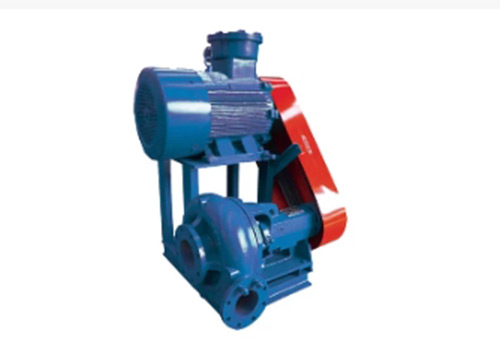Shear pumps are sophisticated pieces of equipment designed to manage and manipulate the flow of viscous fluids, emulsions, dispersions, and other complex mixtures in various industrial processes. From the food and beverage industry to pharmaceuticals and cosmetics, shear pumps are pivotal in ensuring uniform texture, stability, and consistency of products. In this detailed exploration, we will delve into the inner workings of shear pumps, breaking down their mechanisms, principles, and applications.

At the core of a shear pump's operation lies the principle of creating shear forces to induce fluid dynamics conducive for mixing, emulsifying, and homogenizing. The principle is rooted in the mechanical generation of high-velocity gradients within the pump. The high shear pump's rotor and stator interaction is central to this process.
Rotor-Stator Configuration: A shear pump typically uses a rotor-stator assembly. The rotor, a rapidly spinning component, works in close proximity to the stationary stator. This specialized configuration creates shear zones where fluid particles undergo significant velocity changes.
High Velocity Gradients: As the fluid enters the pump, the rotor's rapid rotation creates intense velocity gradients between the rotor and stator. These gradients exert shear forces on the fluid, breaking down particles, disrupting aggregates, and uniformly dispersing them throughout the mixture.
Controlled Shearing: By adjusting the rotor’s speed and the gap between the rotor and stator, operators can precisely control the extent of shearing. This ability is vital for tailoring the process to the specific requirements of different substances and achieving the desired product consistency.
Continuous Process: Shear pumps are often integrated into continuous processing lines, providing a steady and consistent output. This integration enhances efficiency, especially in large-scale industrial applications.
Understanding how the broader pump mechanism works is essential to grasp the function of shear pumps. The general working mechanism of a pump involves several key aspects, common across various types of pumps including shear pumps.
Fluid Intake: Fluids enter the pump through an inlet valve. The design of this valve is crucial for preventing backflow and ensuring a unidirectional fluid movement.
Flow Regulation: Inside the pump, components like impellers, vanes, or, in the case of shear pumps, rotors and stators regulate the flow. By creating areas of high velocity and pressure differences, these components drive the fluid forward.
Energy Transfer: Pumps typically convert mechanical energy into fluid energy. For shear pumps, the mechanical energy from the motor is converted into kinetic energy that creates shear forces.
Pressure Build-Up: As the fluid moves through the pump, the reduction in velocity leads to an increase in pressure. This principle, known as Bernoulli's principle, is fundamental in pump operation.
Outlet: Finally, the pressurized fluid exits through the outlet valve, directed towards its intended application.
Shearing is the action of cutting or breaking apart materials through applied force. In the context of shear pumps, it refers to the mechanical process of applying shear stress to fluids to achieve desired properties. Here is an in-depth look at how shear works in these pumps:
Velocity Differentials: Shearing occurs due to the differential velocities within the fluid. As fluid layers move at different speeds, internal friction causes shear forces. These forces disrupt the internal structure of particles and droplets suspended in the fluid.
Particle Size Reduction: Shearing effectively reduces the size of solid particles, creating a more uniform and stable mixture. This is particularly important in processes like emulsification, where finely dispersed phases improve product stability.
Mixing and Dispersion: Beyond particle size reduction, shear pumps excel in thorough mixing and dispersion. The intense shear forces ensure that all components are uniformly distributed throughout the mixture, eliminating clumps and ensuring consistency.
Emulsion Formation: For industries like cosmetics and food, the formation of stable emulsions is critical. Shear pumps facilitate this by breaking down immiscible liquids into fine droplets, ensuring they remain evenly distributed and stable within the medium.
Shear pumps perform a variety of crucial functions across different industries. Here’s a closer look at their primary applications and benefits:
Homogenization: Shear pumps are used extensively for homogenization—creating uniform mixtures at a molecular level. This is vital in the dairy industry, for example, to ensure consistent product quality.
Emulsification: In the production of emulsions, such as mayonnaise or lotions, shear pumps enable the fine dispersion of one liquid into another, ensuring stability and consistent texture.
Disintegration: For processes requiring the breakdown of solids into fine particles, shear pumps are invaluable. They are commonly used in chemical processing to ensure even particle distribution.
Deagglomeration: In powders or thick pastes, shear pumps help to break down aggregates into individual particles, ensuring a smooth and uniform product.
Viscosity Reduction: Shear pumps can effectively reduce the viscosity of thick materials, improving their flow properties and making them easier to handle and process.
Heat Generation Management: By managing shear forces, these pumps can control the amount of heat generated during processing, crucial for temperature-sensitive materials.
Selecting the appropriate shear pump depends on the specific needs of the application. Factors to consider include the type of fluid, desired particle size, viscosity, and the required shear rate. Collaborating with reliable shear pump suppliers is essential to find a pump that meets these criteria and integrates seamlessly into your production process.
Reliable shear pump suppliers like BZ solid control oil drilling company offer not only high-quality equipment but also valuable expertise and support in choosing and maintaining the right pump for your needs. Their guidance ensures that the selected shear pump delivers optimal performance, efficiency, and longevity.
Shear pumps are integral to numerous industrial processes, enhancing product quality, consistency, and stability. Understanding their working principles, mechanisms, and applications can help in selecting the right pump and leveraging its capabilities to the fullest. By collaborating with reputable shear pump suppliers, businesses can ensure they have the best solutions for their specific requirements, driving productivity and efficiency in their operations.